Did you know that Biophytum sensitivum, also known as the Little Tree Plant or Sensitive Plant, is a fascinating species with unique characteristics? This small, palm-like plant is part of the Biophytum genus and the Oxalidaceae family. What sets it apart is its ability to fold its leaves downwards in response to touch and at night. Native to wetland areas of India and Southeast Asia, Biophytum sensitivum is becoming increasingly popular among indoor plant enthusiasts in the UK.
As a proud owner of a Biophytum sensitivum, I have discovered the secrets to successful plant care. In this article, I will provide you with valuable tips on light requirements, watering techniques, fertilizing and soil needs, pruning and maintenance, propagation methods, repotting advice, and other essential considerations for ensuring the health and longevity of your Little Tree Plant. So, let’s dive in and explore the magical world of Biophytum sensitivum!
Appearance of Biophytum sensitivum (Little Tree Plant)
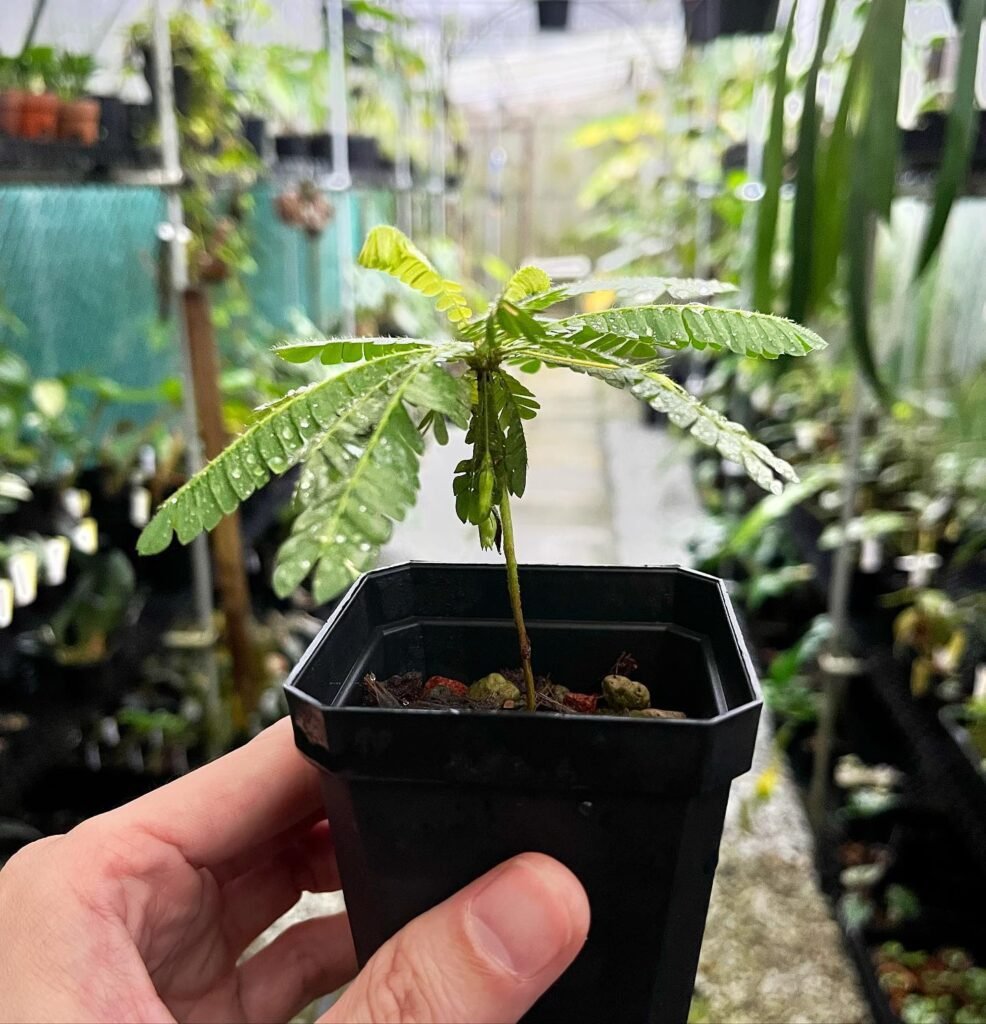
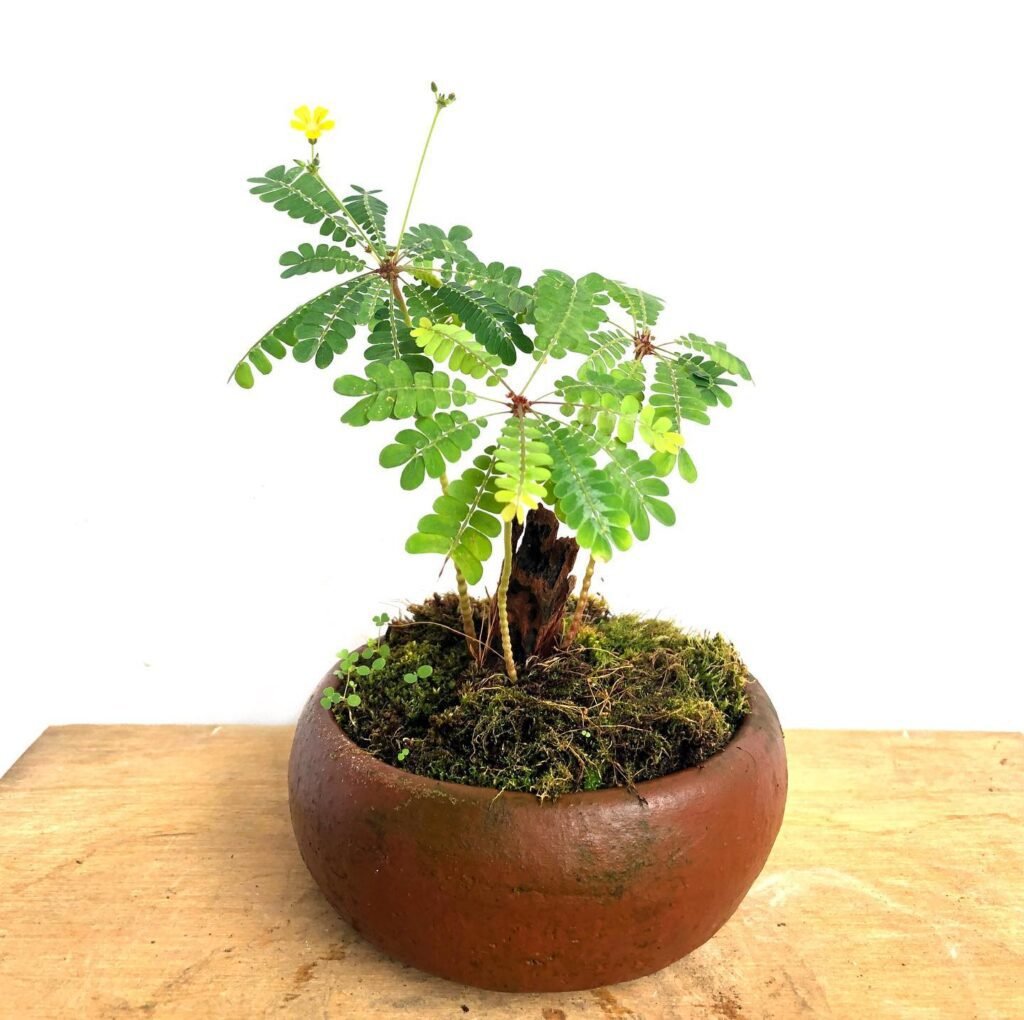
Biophytum sensitivum, known as the Little Tree Plant or Sensitive Plant, has a unique and charming appearance. This small plant resembles a palm, with delicate branches that radiate out from a central crown. Growing to a height of only a few inches, it features a single woody stem that adds to its elegance.
The leaves of Biophytum sensitivum are a vibrant green color, further enhancing its aesthetic appeal. What makes this plant truly fascinating is its reaction to touch and darkness. The leaves fold downwards when touched or during nighttime, displaying its sensitivity.
In addition to its intriguing foliage, Biophytum sensitivum can produce lovely flowers. These flowers come in various shades, including yellow, pink, and cream, creating a delightful contrast against the green leaves. They add a touch of beauty to the overall appearance of the plant.
 Did you know Biophytum sensitivum, often called the Little Tree Plant, has leaves that can move in response to touch? This fascinating trait, similar to the “Sensitive Plant“, allows it to react to its environment, making it a lively addition to your indoor garden. It’s not only a delight to watch but also a fantastic conversation starter!
Did you know Biophytum sensitivum, often called the Little Tree Plant, has leaves that can move in response to touch? This fascinating trait, similar to the “Sensitive Plant“, allows it to react to its environment, making it a lively addition to your indoor garden. It’s not only a delight to watch but also a fantastic conversation starter!
Light Requirements for Biophytum sensitivum


Biophytum sensitivum, Little Tree Plant or Sensitive Plant, requires specific light conditions to thrive. To ensure optimal growth, it should be placed in a bright, indirect location.
Direct sunlight should be avoided, as it can lead to foliage decline and even plant death. However, Biophytum sensitivum can tolerate up to an hour of morning or evening sunlight, as long as the soil remains moist. It’s important to note that shaded environments can result in soil mold and slowed growth, so providing adequate light is crucial.
In order to meet the light requirements of Biophytum sensitivum, it is recommended to place the plant in a location that offers medium to high indirect light. This will promote healthy growth and maintain the plant’s unique characteristics.

Watering Tips for Biophytum sensitivum (Little Tree Plant)
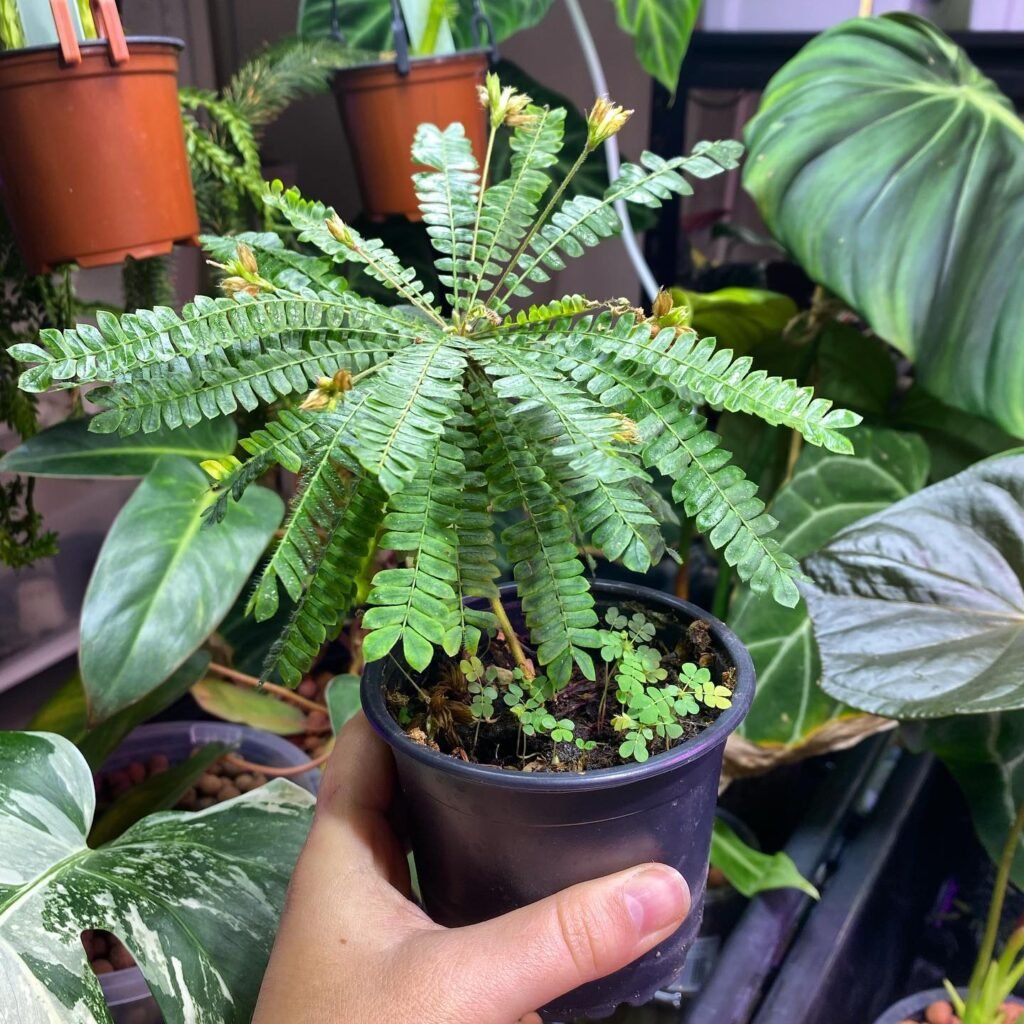
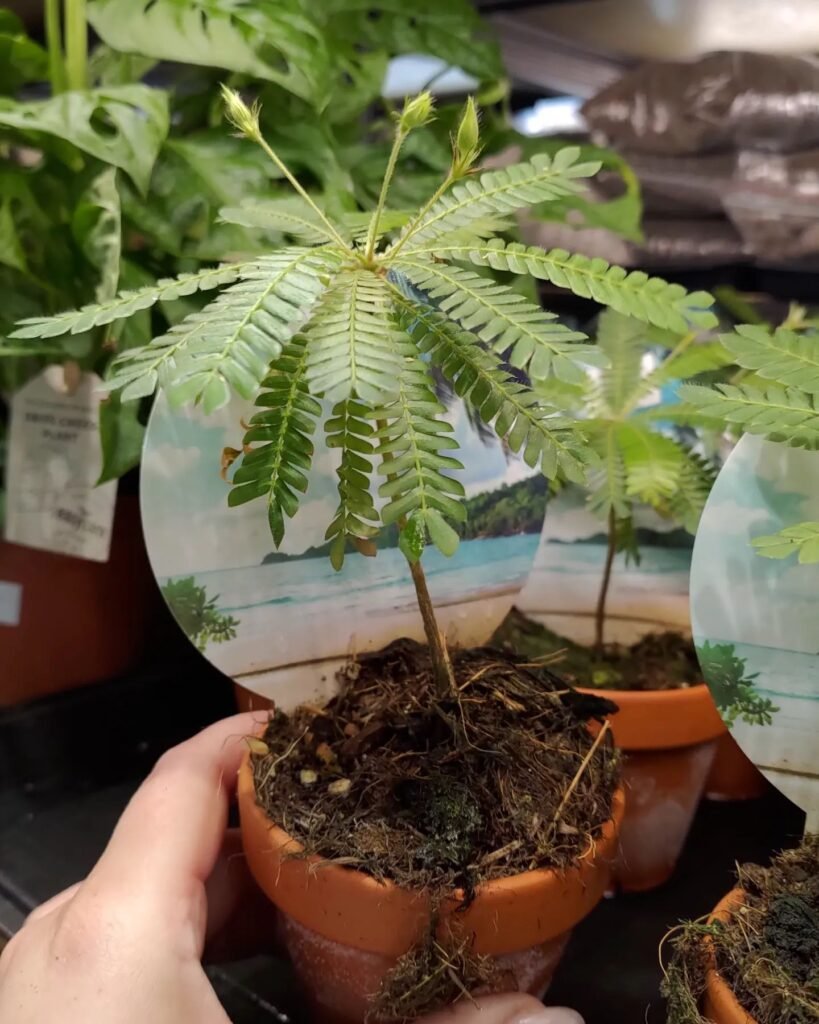
Proper watering is crucial for the health and growth of Biophytum sensitivum, As a plant enthusiast, I have learned valuable watering tips that I would like to share with you.
Biophytum sensitivum prefers consistently moist soil and does not tolerate long periods of drought. To ensure the plant’s well-being, it is important to keep the soil relatively moist.
During the plant’s growing period, allow the top third of the compost to dry out between waterings. This helps prevent over-watering, which can lead to a weakened or rotten stem, and eventual plant death.
However, be cautious not to under-water the plant. Insufficient watering can cause sudden leaf loss, yellowing, and stunted growth. Strike a balance by providing adequate moisture without drowning the plant.
In the autumn and winter months, when the plant is in a state of dormancy, reduce the frequency of watering slightly. This allows the plant to adjust to its seasonal needs.
Remember, the key is to monitor the soil moisture level and the plant’s response. Adjust your watering routine accordingly to maintain optimal conditions for the growth and vitality of Biophytum sensitivum, the Little Tree Plant.

Fertilizing and Soil for Biophytum sensitivum


Proper fertilizing and soil conditions are essential for the health and growth of Biophytum sensitivum, known as the Little Tree Plant. Here are some valuable tips to ensure optimal fertilization and soil requirements for this unique plant:
Fertilizing Tips:
- Regularly fertilize Biophytum sensitivum using a ‘Houseplant’ labeled fertilizer. This will provide the necessary nutrients for healthy foliage and overall plant growth.
- During the plant’s growing period, feed it every four waters to maintain optimal nutrient levels in the soil. In colder months, reduce the frequency to every six waters.
- Fertilization is key to achieving longer-lasting foliage, improved health, and greener appearance of the Little Tree Plant.
Soil Requirements:
- Biophytum sensitivum requires a soil mix with excellent water retention to replicate its natural wetland environment.
- Choose a potting mix labeled for houseplants or a solid tropical mix that contains sphagnum moss or coco coir. These materials enhance water retention, keeping the soil consistently moist.
- By providing the proper soil conditions, you create an ideal environment for Biophytum sensitivum to thrive and display its unique characteristics.
Following these fertilizing and soil tips will help ensure the health, growth, and vibrant appearance of your Biophytum sensitivum plant. Remember to stay consistent with fertilization and use soil that mimics its natural habitat for optimal results.

Pruning and Maintenance for Little Tree Plant


Pruning plays a vital role in ensuring the health and aesthetic appeal of your Biophytum sensitivum. Here are some essential pruning tips and maintenance practices to keep your plant thriving:
- Remove yellow or dying leaves: Regularly inspect your Little Tree Plant and gently remove any yellow or dying leaves. This helps promote better-growing conditions and prevents the spread of diseases.
- Trim plant debris: Along with removing yellow leaves, it’s important to prune any plant debris like dried flowers or damaged branches. This not only keeps your plant tidy but also improves airflow and prevents potential pest infestations.
- Prune flowers and developing buds: To prolong the lifespan of your Little Tree Plant, consider pruning the flowers and developing buds. This allows the plant to redirect its energy towards new growth and increases overall plant vigor.
- Use clean tools: Always use clean and sharp scissors or shears for pruning your Biophytum sensitivum. This helps prevent the transfer of diseases and ensures a clean cut, promoting faster healing and minimizing stress on the plant.
Regular maintenance is crucial for the well-being of your Little Tree Plant. Here are some additional tips to keep in mind:
- Monitor pests and diseases: Keep a close eye on your plant for any signs of pests such as aphids, mealybugs, or spider mites. Additionally, watch out for common diseases like root rot or leaf-spot. Early detection and prompt treatment can prevent further damage.
- Provide necessary care: Ensure your Biophytum sensitivum receives adequate light, water, and fertilization. Follow the care instructions mentioned in the previous sections of this article to create an optimal environment for your plant’s growth and well-being.
- Regularly check soil moisture: Little Tree Plants thrive in consistently moist soil, so it’s important to monitor the moisture levels. Avoid over-watering, which can lead to root rot, or under-watering, which can cause leaf loss and stunted growth.

Propagating Biophytum sensitivum (Little Tree Plant)


Growing your Dracaena Surculosa collection can be quite exciting, especially when you explore different propagation methods, including seeds and division. Here’s how you can go about it:
- Seeds Propagation:
- Soak the Seeds: Begin by immersing the seeds in lukewarm water for around 24 hours in a dark place to encourage germination.
- Prepare the Compost: After soaking, scatter the seeds lightly on top of moist ‘Houseplant’ labelled compost, ensuring not to compact the soil for better air circulation.
- Maintain Conditions: Keep the soil consistently moist and provide some bottom heat if possible. A spot with bright, indirect light is ideal for encouraging germination.
- Germination to Transplantation: Once the seeds have sprouted, typically within a few weeks, carefully transplant the seedlings into individual pots to allow more room for growth.
- Division Propagation:
- Identify Division Points: Look for natural separations or offsets in your plant. These are the spots where you can divide the plant to create new ones.
- Remove the Plant: Gently take your Dracaena Surculosa out of its pot and clear the soil around the roots to identify where you can easily separate it.
- Divide Carefully: Using a clean, sharp knife, cut through the root ball to separate the offsets or divisions. Ensure each new section has a good amount of roots.
- Potting Up: Plant each division into its own pot filled with a well-draining ‘Houseplant’ labelled compost, similar to the one used for seeds propagation.
- Aftercare: Water the new plants well and place them in a location with bright, indirect light. Avoid direct sunlight to prevent stress on the newly potted divisions.
Whether you choose to propagate Dracaena Surculosa through seeds or division, both methods are rewarding. They offer a hands-on way to increase your indoor garden and enjoy the process of nurturing new plants from the start. Remember, patience and consistent care are key to successful propagation.

Repotting Tips for Biophytum sensitivum

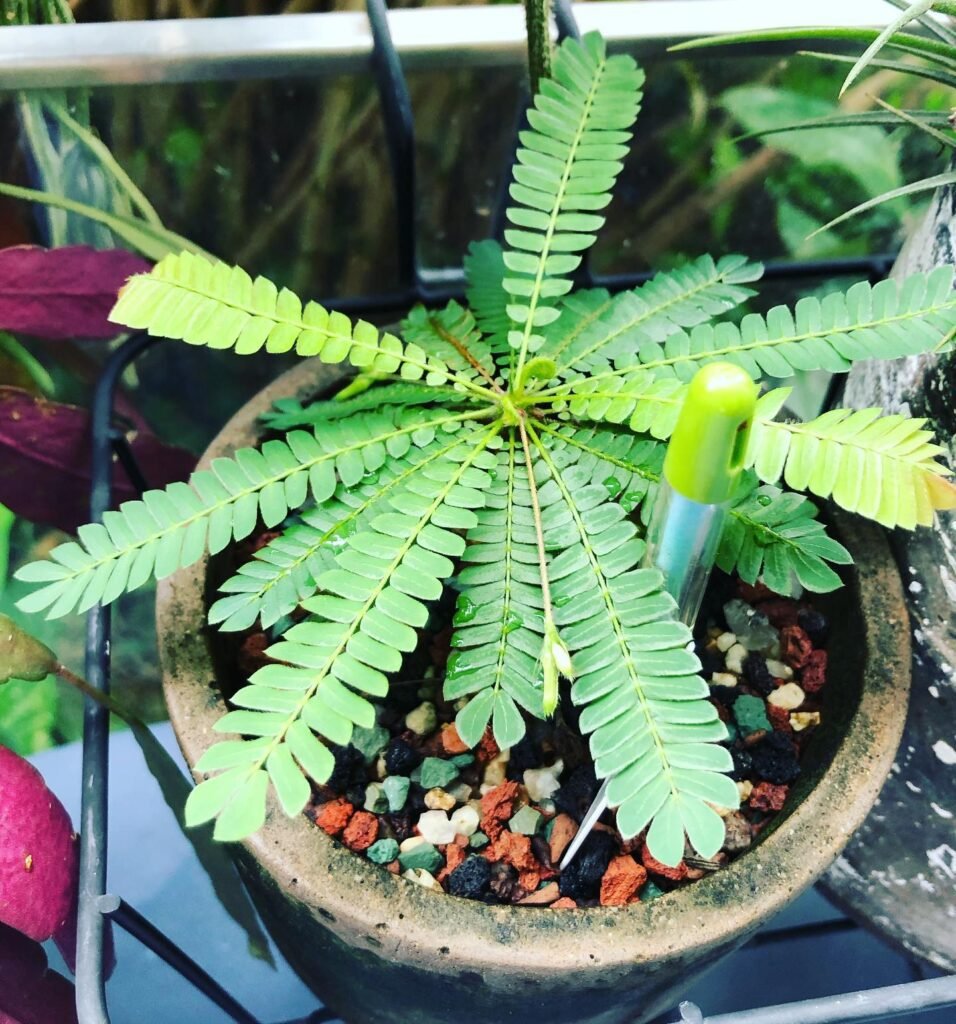
Repotting Biophytum sensitivum is typically not necessary, as the plant has a lifespan of 6-18 months. However, if repotting becomes necessary, there are a few tips to keep in mind:
- Repot when the plant has doubled in size or once a year, whichever comes first. This ensures that the plant has sufficient space to grow and thrive.
- Use a ‘Houseplant’ labeled potting mix or an appropriate tropical mix to provide the necessary nutrients and water retention for the plant.
- Choose a new pot with good drainage to prevent overwatering and root rot. The pot should have drainage holes at the bottom to allow excess water to escape.
- Before repotting, gently loosen the plant’s roots from the old pot to avoid damaging them. This can be done by tapping the pot or carefully sliding a knife around the inside edges.
- When placing the plant in the new pot, add fresh potting mix around the roots, ensuring that the plant sits at the same depth as before. Gently firm the soil around the roots to provide stability.
Remember to water the plant after repotting and provide the appropriate care to help the plant adjust to its new environment.
 Did you know the Biophytum sensitivum, or Little Tree Plant, completes its entire life cycle in just a couple of years? This rapid journey from seedling to maturity and back to seed allows it to spread quickly, offering a unique opportunity to observe the full circle of plant life right in your home.
Did you know the Biophytum sensitivum, or Little Tree Plant, completes its entire life cycle in just a couple of years? This rapid journey from seedling to maturity and back to seed allows it to spread quickly, offering a unique opportunity to observe the full circle of plant life right in your home.
Common Issues with Biophytum sensitivum (Little Tree Plant)
Biophytum sensitivum, also known as the Little Tree Plant or Sensitive Plant, may encounter a few common issues that plant owners should be aware of. One of these issues is irregular watering, which can lead to yellowing leaves and stunted growth. It’s important to maintain consistent moisture in the soil to ensure the plant’s health and vitality.
Mold development on the compost’s top layer is another issue that can occur with Biophytum sensitivum. To address this problem, gently aerate the soil and ensure proper dryness. Additionally, adjusting watering practices and introducing a pebble tray can help prevent soil drying and over-watering.
Transplant shock is a common concern when repotting Biophytum sensitivum. To minimize this, give the plant a good soak before repotting and avoid damaging the roots. By taking these precautions, the plant’s transition to a new pot can be smoother and less stressful.
Lastly, it is essential to watch out for pests and diseases that can affect Biophytum sensitivum. Common pests include mealybugs, aphids, spider mites, scale, thrips, and whitefly. Regular monitoring and appropriate pest control measures should be implemented to keep the plant healthy. Diseases like root rot and leaf-spot should also be addressed promptly to prevent further damage to the plant.
Helpuful Video about Biophytum sensitivum (Little Tree Plant)
Thinking about growing a Biophytum sensitivum, also known as the Little Tree Plant? I’ve found some great video guides online for you. They’re full of easy tips and tricks to help your plant do well, from basic care to smart gardening hacks. These videos are perfect whether you’re a gardening pro or just starting out. They make looking after the Little Tree Plant really simple, so you can have fun gardening without the fuss.
- Biophytum Sensitivum care | Sensitive plant
- Grow biophytum sensitivum from seed! | Little Tree Plant
- Cutest plant ever! Biophytum sensitivum
FAQ about Caring for Biophytum sensitivum (Little Tree Plant)

Keen to make your Biophytum sensitivum (Little Tree Plant) look absolutely fabulous? Check out my straightforward FAQ for all the guidance you’ll need to nurture your Little Tree Plant. From finding its ideal spot in your home to mastering the watering routine, I’ve got you covered to ensure it flourishes.
Water when the topsoil feels dry. Typically, this means once a week, but adjust based on your home’s humidity.
A bright spot without direct sunlight is ideal. East or west-facing windowsills are perfect.
It prefers bright, indirect light. Direct sun can harm its delicate leaves.
Signs include yellowing leaves and a soggy base. Let the soil dry out a bit more between waterings.
It can manage in lower light but thrives in brighter conditions. Growth may slow in dim areas.
Every 2-3 years or when it outgrows its pot. Spring is the best time for repotting.
Place it on a pebble tray with water or mist the leaves regularly.
It prefers warmer temperatures, between 18°C and 24°C. Avoid cold drafts.
Yes, feed with a half-strength liquid houseplant fertiliser once a month during spring and summer.
Trim off any dead or damaged leaves at the base to encourage healthy growth.
Spider mites and mealybugs can be issues. Check regularly and treat with insecticidal soap if needed.
This could be due to overwatering, under-watering, or lack of nutrients. Assess your care routine.
Yes, it’s easily propagated by seeds or by dividing mature plants.
Biophytum sensitivum is not known to be toxic, but it’s always best to keep plants out of reach.
This often indicates low humidity. Try increasing humidity around the plant.
Ensure it’s getting enough light, not over or under-watered, and fertilise regularly during growth periods.
Growth rate can be moderate to slow, depending on conditions.
Absolutely, its compact size and humidity preferences make it an excellent terrarium plant. Ensure the terrarium is well-ventilated and not placed in direct sunlight.
Yes, during warmer months, you can place it outside in a shaded spot. Just ensure it’s not exposed to direct sunlight and bring it indoors when temperatures start to drop.
Yes, homes in northern regions may require additional warmth and light, especially in winter, compared to the milder southern areas.
I hope this has made looking after your Biophytum sensitivum (Little Tree Plant) a bit clearer. Still got questions? Leave them in the comments, and I’ll nip back with some answers. Remember, all gardeners start somewhere, and discovering how to care for your Little Tree Plant is a thrilling adventure.

